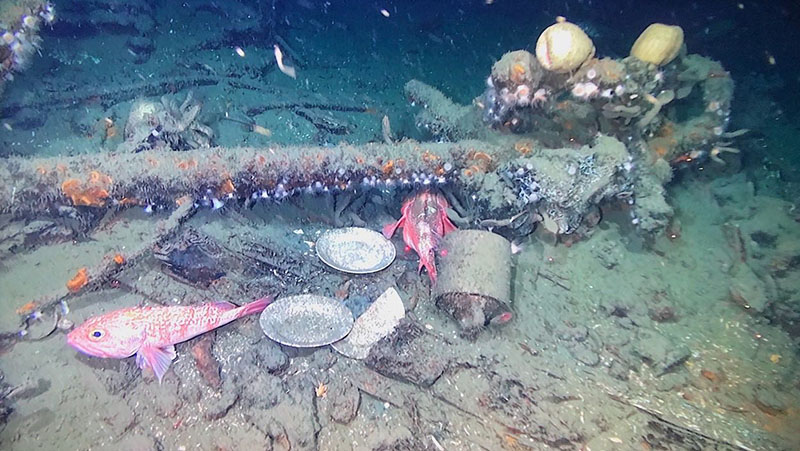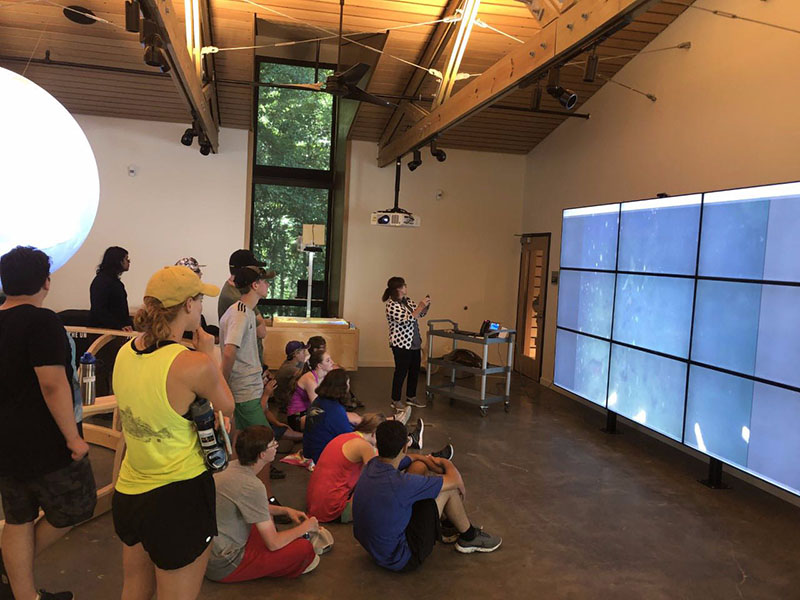
By Jessi James, Marine Education Specialist
June 28, 2019

A first-person view from ROV Odysseus, viewing the unknown shipwreck’s newly found anchor. Image captured by ROV Odysseus, courtesy of Microbial Stowaways. Download larger version (jpg, 705 KB).
With summer camp coming to a close, Ocean Science and Technology Camp (OSTC) students gathered around the Marine Education Center’s video wall display hoping to catch their first glimpse of a shipwreck. After spending a full week learning about science, technology, engineering, and technology (STEM) careers; elaborate experiments; and high-tech equipment, this virtual communication was the pinnacle of their week.

Ocean Science and Technology Camp (OSTC) students gathered in the Marine Education Center Exhibit Hall, telecommunicating directly with the R/V Point Sur. Image captured by ROV Odysseus, courtesy of Microbial Stowaways. Download larger version (jpg, 559 KB).
Ship-to-shore telepresence was not an easy feat to accomplish. However, with help from both on-board and land-based contacts, the crew aboard R/V Point Sur was able to pull it off without a hitch. OSTC students were able to tap directly into the remotely operated vehicle (ROV) camera feed in order to experience a first-person perspective from Pelagic Research Services’ Odysseus. While on station, students got a front row seat to this unknown wooden-hauled shipwreck, with the dive being narrated by the microbiologists and archaeologists that had been sampling the site over the past two days.
The day’s mission was to wrap up any outstanding archaeological surveying and deploy five microbial recruitment devices (MREs). Viewers were able to observe the newly discovered ship’s anchor, bell, dinner plates, and various shards of pottery. Deep-sea organisms such as fishes, crustaceans, and corals were also present at the location. Although exhausted from an action-packed week, students asked several well-thought questions that were able to be in answered in real time. I believe that telepresence was the cherry-on-top moment for these young adults; they were able to take all of the knowledge they’ve gained from their unique camp experience and apply it towards a real-world situation that they never could have fathomed to be included in.